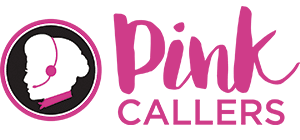As one of the original ‘Mad Men’, David Ogilvy was a pioneer of copywriting in advertising and marketing. (We can only assume that in his quest for marketing mortality, Mr. Ogilvy consumed as many old fashions as Jon Hamm’s fictionalized portrayal of the early advertising giants, such as Ogilvy himself, in AMC’s Mad Men).
No matter what Ogilvy used to help him think creatively and outside the box in order to come up with his next big advertising campaign, there is no denying his impact on creating engaging, eye-grabbing ads.
In his book, “Ogilvy on Advertising,” Ogilvy divulges some of his secrets and best practices when it comes to creating images and copy that draws in the audience.
Here are 4 of those secrets and how they relate to my job as a content writer.

Make the Product the Hero
“There are no dull products, only dull writers.”
I absolutely love this quote. While a copywriting may be writing for a product or service that isn’t necessarily sexy, that doesn’t mean the copy can’t be written to impress.
Ogilvy talks about the importance of turning the product into a hero by illustrating how it can change someone’s life for the better. I like this sentiment and works great for advertising in the traditional sense (like a newspaper ad). But as a content writer and strategist, we write a little differently for our clients.
Instead of making the product the hero, we make the reader the hero. In other words, the content is written so as to position the product as the key to the reader’s happiness.
For example — if we were writing about a lawnmower, we wouldn’t just boast about how effective the lawnmower is and all the fancy specs it has. Instead, we would highlight the reason anyone is interested in a lawnmower in the first place: to have an amazing looking lawn. So, the overall message would be something along the lines of: “With the new Grass Cutter 300, you’ll be able to have the lawn of your dreams that all your neighbors will be envious of. Stop being disappointed in your lawn and call us today!” (I’m trademarking that name, by the way).
It’s a very subtle difference, but making sure that you do emphasize how the reader will be a hero by purchasing the product is something that should be included in almost every piece of content.
The Miracles of Research
One of the sections of the book is called “The Eighteen Miracles of Research”.
Here is one that is particularly fitting for what we do here at Hook, which is digital marketing.
“(Research) can find out what factors are most important in the purchase decision, and what vocabulary consumers use when talking about your kind of product.”
This is keyword research to a tee, and it’s awesome to think that before the days of Ahrefs and SEMrush, marketers and advertisers were already looking for ways to create copy that was relevant to their target audience.
Finding out the language of the consumer is HUGE if you want to craft a message that actually resonates with them.
Do Your Homework (on the Product)
Along the same lines of researching your target market, you also have to understand how to write for the product.
When Ogilvy landed the Rolls-Royce account, he says he spent three whole weeks reading up on the car to understand the ins and outs of it. This led him to eventually stumbling upon the statement, “At 60 miles an hour the loudest noise in this new Rolls-Royce comes from the electric clock.”
He eventually used this as the header for one of his most famous advertisements.
If you’re writing copy for your own product or service, then you should already be familiar with the product (i.e. an internal content team).
However, as a content writer for an agency, I have to spend a lot of time researching companies prior to writing anything for them. This may also involve setting up Subject Matter Expert (SME) interviews to make sure that what I’m writing is truthful to the actual product or service.
Repeat Your Winners
Even Ogilvy understood the importance of repurposing content that is doing well. One of his passages talks briefly about leaving an advertisement out there if it is doing well and has shown to bring in more sales.
The same can be said for content. If you have a blog post that is getting a ton of views and maybe is even leading to conversions, then find ways to make it better or to bring more traffic to it.
Post it again on social media, add an infographic to it, incorporate more links, etc.
Just because a piece of content is old doesn’t mean its useless. Check your analytics, find some past winners and make them winners again.
Overall, I definitely enjoyed reading “Ogilvy on Advertising” and definitely recommend it for aspiring copywriters and content marketers alike.














